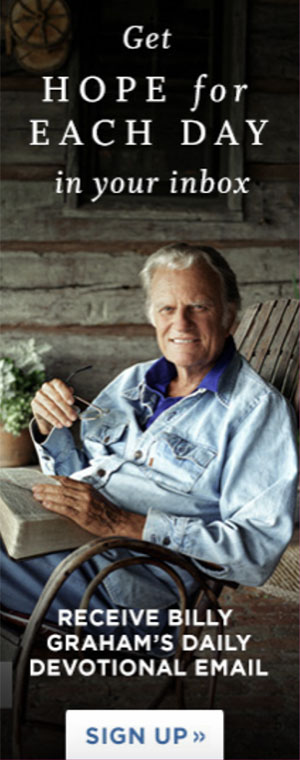With every new disaster, the call seems to reverberate louder.
Great pain. Great suffering.
And an even greater need for Jesus Christ as Savior.
“We’re living in incredible days of uncertainty,” said Jack Munday, director of the Billy Graham Rapid Response Team. “Each disaster is a reminder of how life is so fragile, yet there is incredible importance of sharing the Gospel with people.”
The job of the Rapid Response Team chaplains has no end in clear sight. Natural disasters are bleeding from one country to the next.
The Haiti earthquake aftermath still has pressing needs 16 months later. Japan Tsunami survivors are reeling two months later. And Alabama tornado victims are struggling to make sense of the twisters that obliterated their world three weeks ago.
This on the heels of North Carolina tornadoes and the recent Mississippi River flooding.
“When the things of the world are stripped away, in times like this it’s easier to find God,” Munday said. “We’re not so distracted. I think He’s has made us all with a hole in our heart that only He can fill. In times like this, the hole gets bigger.”
Here’s an update on the current Rapid Response Team efforts.
ALABAMA
The numbers have been staggering: Over 200 tornadoes on April 27 killed an estimated 250 people in Alabama and 350 across the southeast.
The cost to rebuild could reach or surpass the $2 billion price tag that 2004 Hurricane Ivan left behind.
“The damages are so extensive that an Army Corps of Engineers could come and completely clear everything away,” Munday said.
But in the meantime, chaplains, working alongside Samaritan’s Purse volunteers, are ministering to one family at a time. A steady stream of eight chaplains continue to rotate in and out of Tuscaloosa and another six in Birmingham to provide comfort and the hope of Christ.
The deployment is expected to last another month, but the timeline it’s still premature to have a solid timeline.
“We’ll be there as long as our services are required,” Munday said. “Our role is to bring the church to the level of continuing the ministry.”
The chaplains continue to minister to the survivors, their neighbors and families.
“The chaplains are working with Samaritan’s Purse, but that usually spills over to the neighbors, who may ask the chaplain to visit someone in the hospital or a family member.
And as Munday fully realizes: “Just because someone’s lot is clear, doesn’t mean their heart is.”
Alabama videos, photos, updates
JAPAN
Munday returned recently from visiting Osaka, Tokyo and Sendai, where he met with pastors and started developing a plan on how to reach this hurting country with Grief and Crisis Training.
The current plan is for Munday to return to Japan to train a selected 35 people who will in turn train 40 others in Grief and Crisis Training, using Samaritan’s Purse camps.
“Some will be identified to minister in the northern Japan region,” Munday said. “And some will be taking that training throughout Japan and taken them into churches. “
The physical needs in the Sendai area and northern Japan are still great, with housing a tremendous issue, but Munday realizes those pale to the spiritual needs of a country that is less than 1 percent Christian.
“There were reports of people in these shelters that were sitting all day with a blanket over their head,” he said.
But the pastors and church leaders are finding a willingness to hear the Gospel like never before.
“They are seeing an openness to the Gospel, more than they’ve seen in 25 years.,” Munday said. “The pain is so deep that they know they need to find hope. They know they need to find comfort. It hurts too much. If there’s something out there that Christ can offer, they are interested.”
Another BGEA initiative is a monthly pastor’s retreat in Sendai, which will help provide specific training as well as encourage the pastors.
“Because of Samaritan’s Purse, all the resources, supplies and materials they’ve sent over and provided through the churches, it’s making churches look like lighthouses,” Munday said.
And after the 1995 Kobe earthquake experience, where anything resembling Grief and Crisis training was virtually non-existent, anything that can bring comfort and hope to the hurting is welcome with open arms.
And with these materials now translated into Japanese, the doors of ministry will quickly open.
“People say they’ve never had anything like this and we need this in our churches,” Munday said. “What happened after Kobe is that many suffered the effects of the trauma and today are no longer in ministry.”
HAITI
Now in its 17th month of ministering to the Haitians, the Rapid Response Team has had 101 different chaplains who’ve served in Haiti since the Jan. 12, 2010 earthquake.
Over 28,000 people have been ministered to in that time and the Rapid Response Team continues to keep chaplains rotating, serving both the Samaritan’s Purse volunteers and the hurting people of Haiti.
“The progress is very slow because of the scope of devastation,” Munday said. “The clinics aren’t as active as before, but there’s still building projects and food distribution and providing medical care.”
Chaplains are generally spending 2 to 4 weeks at a time and with My Hope Haiti scheduled for July 21-23, BGEA’s impact in this country will continue for some time.
“It’s a slow go,” Munday said of the recovery process. “It’s a marathon, not a sprint.”

